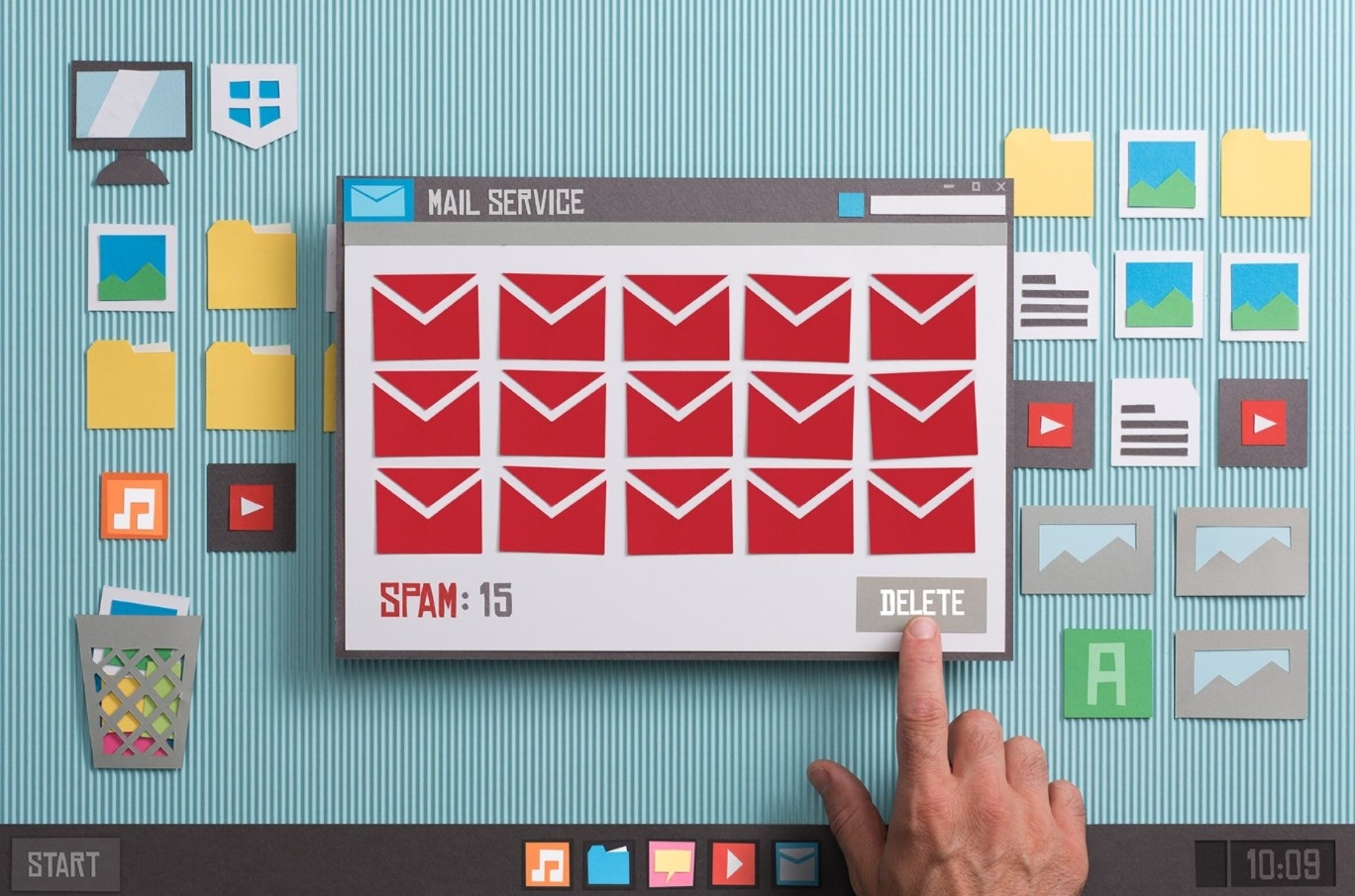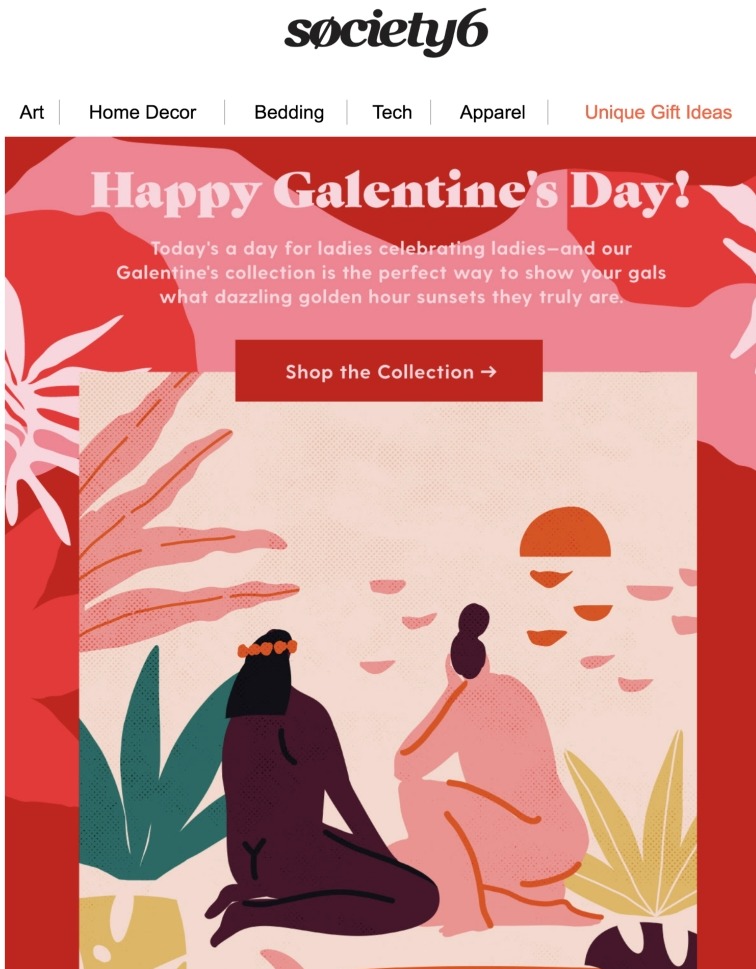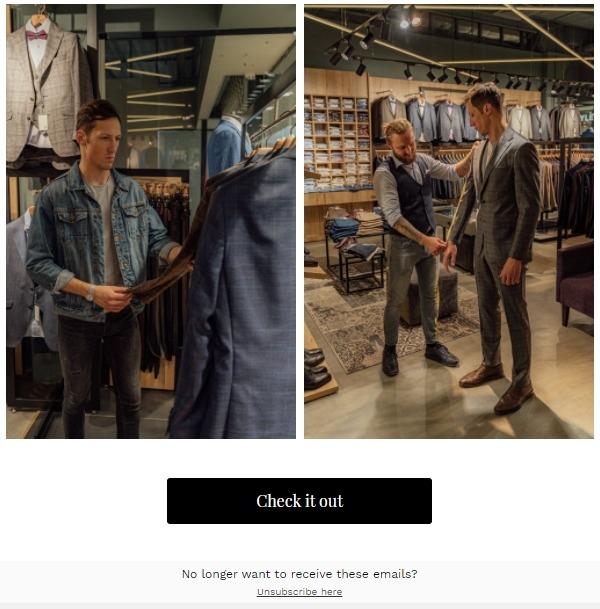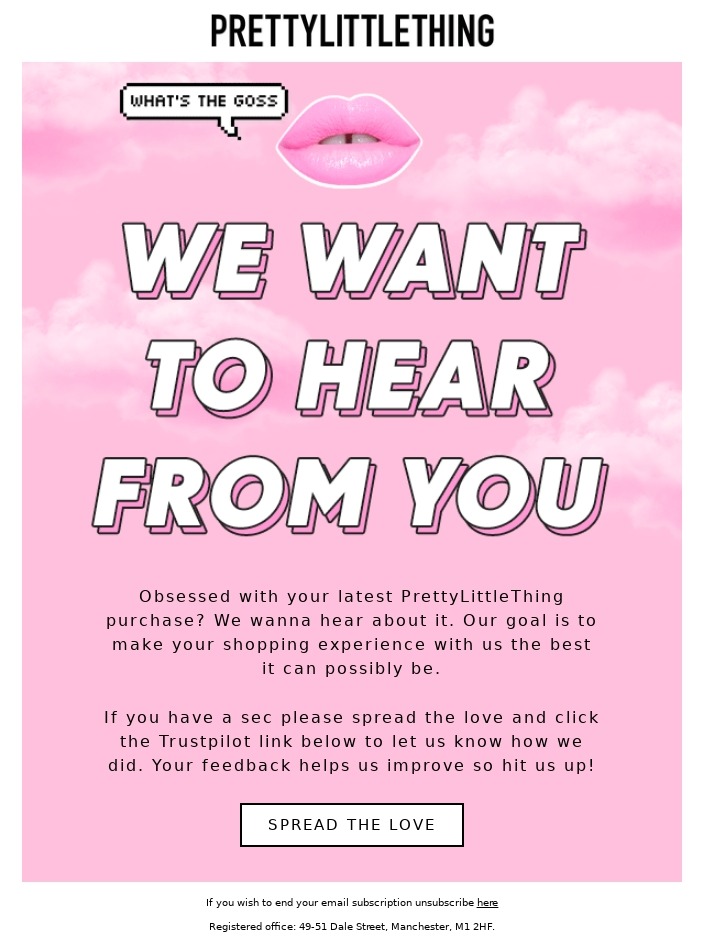How to Optimize Email Content for Anti-spamming?
Email marketers spend many of their efforts most likely to build the essentials: growing a quality list, drafting poignant email copy, designing great branded emails, and crafting enticing subject lines. With all those quality preparation, your subscribers will surely receive and open your emails, right?
Not necessarily. There are many factors that affect an email’s deliverability. These factors would ultimately determine whether your emails get to the recipients’ inboxes or not. With increasingly sophisticated spam filters and more stringent laws, it’s to your benefit to know what can affect your email’s deliverability.
It would be best if you always were ever-vigilant when sending emails to your subscribers. Avoiding spam filters is an essential part of maximizing the opens, clicks, and, most importantly, sales you get from your email campaigns.
So how can you avoid spam filters? How can you ensure that your campaigns are delivered to your contacts’ inboxes and not filtered out into a spam folder?
In this article, let’s take a look at the things you should do in your email marketing to optimize your message’s deliverability rate, and things you should absolutely avoid to prevent your emails from being marked as spamming. This comprehensive guide will help you understand spam traps and filters to arrive at the desired inboxes safely. Let’s start our journey!
What is email spam?
The term “spam” is used to identify an unsolicited commercial e-mail. The act of spamming is defined as the practice of distributing messages indiscriminately without permission of the recipient and without consideration for the appropriateness of the message. In other words, any bulk sending of commercial emails without consumers’ consent can be described as the act of spamming.
The use of email marketing has increased steadily, which influenced a dramatic growth in the number of commercial emails being considered spam. More than 70% of the global emails (or 180 billion emails every day) are identified as spam. Spamming is widely considered an unacceptable act of sending emails and often getting punished by both the laws and email service providers.
What is an email spam filter?

A spam filter is an automated email mechanism that identifies whether a message is spam or legitimate. If the spam filter recognized an email as junk, it would prevent delivering it to the recipient’s inbox.
In the past, spam filters were used to analyze email campaigns’ content looking for signals that can determine whether they should keep sending emails to the inbox or not.
Popular-used phrases back in the day like “double your income” or “get rich fast” were obvious signals that would increase the spam score and cause an email campaign to get sent into the spam folder.
These days, however, email service providers like Gmail, Outlook, and Yahoo have gotten much more advanced with their spam filters.
Now, whenever a user sends a new email campaign, inbox providers like Outlook and Gmail actually look at the user engagement and previous interactions from recipients with the past campaigns. This information would then determine whether the latest email campaign of a domain makes it to the inbox or not.
Specifically, the following factors are the most determining elements. I will divide them into good signal factors and harmful signal factors:
Good signal factors:
-
Open – If your recipients frequently open your emails, this is considered a good signal that your campaigns aren’t spamming and will increase your emails’ deliverability.
-
Reply – If recipients respond to your email campaigns (they reply with another email), this is seen as a good signal factor and helps improve your domain and email address’ reputation with email providers.
-
Move to folder – If people move your emails into various inbox folders, the email providers consider this as a good signal they are interested in your emails and would be more likely to continue delivering your emails to their inbox.
-
Not junk – If recipients move your email out of the junk folder, the email providers take this as a very strong, positive signal that people find your campaigns relevant and worthy of existing in their inbox.
-
Add to address book – This is quite rare, but if your recipients add your branded email address to their address book, this is seen as a positive sign that they care about receiving email from your company and email service providers are more likely to continue delivering your emails to their inbox.
Bad signal factors:
-
Delete without open - If your recipients only take a quick glance at the sender’s name and subject line, then delete your email campaign, this is a negative signal and email service providers are more likely to prevent your emails from going into people’s inboxes.
-
Move to junk – Same as the above, If people move your emails to the Junk folder, email service providers take this as a very strong, negative signal that your branded email campaigns aren’t worthy to be inside the inbox.
The factors above combine to give you two unique scores: 1. The score with the individual subscriber - If a subscriber always or often opens your email campaigns and moves them to folders, you are likely going to build up a good deliverability rate with that individual subscriber. 2. The score with the email service providers - For example, if a major number of your Gmail subscribers open your email campaigns and move them to folders, you are also more likely to build up a good reputation with Gmail.
When it comes to deciding whether it should deliver your latest email campaign to the subscriber’s inbox or not, email providers like Outlook and Gmail take both of these reputation scores into account.
So, for instance, you could earn a fantastic reputation with an individual subscriber, let’s call her Tina, who always opens your email campaigns. However, your reputation with the email service provider Gmail is poor because they see that a large number of their users move your email campaigns to the junk folder, then even Tina will stop receiving your email campaigns (despite the individual’s high engagement in the past).
In conclusion, you need to have a good reputation with recipients and email service providers to pass the spam filters and make it into recipients’ inboxes.
Why do spam filters matter?
As mentioned, over 180 billion spam messages are sent every day. And, even worse, spam can work for indecent users. That is why they still keep sending them.
In fact, companies lose hundreds of millions of dollars to spam emails sent from fake vendors every year. This not only hurts the user experience but the company’s reputation and sales as well.
So, in order to protect their users, both companies and people, inbox providers like Gmail, Yahoo Mail, and Outlook use spam filters to help ensure the spam messages don’t clutter up the user’s inboxes or, even worse, harm the users.
These spam filters are a much-needed shield, analyzing incoming emails and allowing only the good ones to reach the inbox while preventing the bad ones and sending them into the spam folder (or completely reject them).
While it might seem a bit technical, it matters to email marketers. Spam filters act similarly to a sales funnel. There are a number of steps that your email campaign goes through to drive results for your business.
Before you can generate a single sale or website visitor from your campaign, your email must first be able to deliver into your subscriber’s inbox, get opened, and finally get clicked.
However, if your campaigns can’t make it past the spam filter, then they’ll never make it to the subscriber’s inbox and won’t have any chance to be opened, clicked, and drive results for your business.
How to optimize email content for anti-spamming?
As you may have realized, whether your email campaigns can enter your subscriber’s inbox or not largely comes down to their previous engagement with your campaigns.
If the subscribers clicked and opened on your previous emails, then your next email campaign is more likely to make the inbox. On the other hand, if they’ve deleted your emails without opening them, it’s more likely that your next campaigns can end up in the spam folder.
The question is: How can you make sure subscribers are interacting with your messages and sending positive signals to increase the deliverability rate? That is what we will find out in this section. There are many tips to follow, so make sure to bookmark this article so you can go back anytime you need to optimize your email for anti-spamming.
1. Keep your email lists updated and clean
Even if your list consists only of valid opt-ins, you are still at risk of being marked as a “spammer” if you properly update and clean your email list. Why? Because ISPs (internet service providers ) base the complaint rate on active subscribers, not the number of subscribers.
Also, expired email addresses can become SPAM traps, which means the abandoned email addresses that haven’t engaged in a long time may morph into spam traps. This can happen even if you acquired your emails in a legitimate manner. Hitting even just one of the spam traps can cause deliverability problems.
By keeping your email lists updated and clean, you’ll decrease the likelihood of subscribers flagging your emails as spam. You can identify expired email addresses and inactive subscribers with metrics such as clicks, opens, or website activity.
2. Use double opt-in
Double opt-in is a follow-up email with a confirmation link that someone can receive after subscribing to your email list. You send this email to ensure that they actually want to form an email communication with your company.
Users that confirm that they want to receive email communications from your company with the double opt-in are the ones that are much more likely to read and engage with your email campaigns. When you use double opt-in, you will qualify your email list much better and your subscribers would be much more engaged.
3. Use a recognizable sender name

It’s a good practice to always send emails from an email address that contains your personal name and your brand name so that recipients can recognize you.
Why? Simply because in the mountain of emails they receive every day, they will have to consider which ones to open quickly. And people prefer to open emails that include a personal name that they can recognize in the ‘from’ box, rather than an impersonal, generic one.
An email address such as firstnamelastname@domain or similar variations is always a good choice.
Moreover, email service providers tend to pay closer attention to the ‘from’ field. This is due to spam technology having reputation-based filtering that collects information about the message’s source (IP address and domain) among other data. Frequently changing the source IP address often signals a shady email account.
So, avoid changing your ‘From’ field names frequently and don’t create obscure names for the ‘From’ field such as noreply@domain or 1258gps@domain.
4. Configure your account to send from a business domain
When you sign up to use email marketing software like AVADA Email Marketing, you get tools to create beautiful, on-brand emails and get access to a sending infrastructure that ensures the delivery of your campaigns to the subscribers.
By default, your email campaigns will be sent from one of the generic domains, such as mail1.com or mail2.com. However, you can enable a setting that allows you to send your email campaigns from a more professional domain name (i.e., yourbusiness.com).
If you do this, you send strong signals to email service providers like Outlook and Google that you are a legitimate business sending professional marketing email campaigns, as spammers often don’t have the time and effort to go through the process of creating a real business.
So in order to help your emails get delivered, spend some time setting up a business domain for your company in your email marketing tool. Don’t worry; it’s quick and easy to do.
5. Use segmentation to send targeted campaigns
Rather than sending one email content to your entire list, try segmenting your contacts and let your email campaigns target those you know will be interested.
By doing this, you’ll be able to increase the number of recipients opening your emails and decrease the number of recipients deleting them without opening, sending positive signals to email service providers about the relevancy of your campaigns.

Notice how Society6 uses list segmentation to send emails to their female customers on Galentine’s Day. Although Society6 has items for all genders, they still analyze who their female subscribers are and use that data to make a niche email campaign.
This personalization approach increases the number of people opening and engaging with their email campaigns, and lets email providers know that their recipients want to keep receiving their emails, which is no doubt a positive signal.
6. Include an unsubscribe link and a physical mailing address

Allowing people to unsubscribe is important to keep your list clean and updated because anyone receiving your emails should show the desire to receive them – otherwise, you’re just spamming your recipients. It’s illegal not to include a way for your recipients to unsubscribe from your list in many countries easily. Did you know that?
In your marketing emails, you need to include a way for people to unsubscribe from your email list. You can do this by simply sending a reply email for unsubscription or by including a button to click on. Keep in mind that you should have no more than one level deep step to reach a page for people to unsubscribe. The method you choose is entirely up to your email style, as long as the information is easy to locate and clear to understand.
The most common place for an unsubscribe CTA is in the footer of the email, so users already know where to look for it - which creates a better user experience. In the email above from our AVADA Email Marketing’s email editor, you can see that we already put in an unsubscribe button for your recipients.
7. Only email people who have given you permission
Rather than wasting money buying an email list and risk being banned by the email service provider, focus your efforts on building a good email list for your business.
Organically-built lists (through people opting-in to your email list) have a 5x higher open rate than purchased or scraped lists and have 4x fewer spam complaints.
Your own email list helps increase opens, reduces spam complaints, and sends positive signals to email providers while helps ensure your campaigns get delivered to the subscribers’ inboxes.
So how can you build a high-quality email list based on permission? By offering a fantastic incentive (such as excellent content or exclusive discounts) and providing prominent subscriber opportunities, it is easy for people to join your list. From there, you can create a high-quality email list that ensures the email campaigns’ deliverability.
8. Include the recipient’s name in the “To:” field.

Personalizing your emails based on your contacts’ information can be vital to their engagement with your email content. Plus, spam filters know that you do know your recipient this way.
In our email marketing tool, you can easily add the recipient’s name to the “To:” field and customize how you call your recipients.
9. Allow recipients to view your email in a web browser.
Even after you’ve taken every step to assure proper email design, an email service provider can still display your email poorly. So, including a link in every email and lets recipients view your email as a web page. This way, if any display problem arises, the recipients can view your email’s full beauty on another page of the browser.
10. Offer both an HTML and a plain text version of the emails
HTML emails use formatting so you can design more beautiful emails using attractive visual components, while plain text emails are simply emails without any formatting. By offering both an HTML and a plain text version of a single email, you not only indicate your legitimacy to the email service provider but also make your emails more reader-friendly.
Most email marketing tools let you easily create a plain-text version of the email within their email editor, so take those few extra minutes to create the plain-text version of your email and optimize it. Also, make sure the code of the HTML version is proper: If you have broken tags in your HTML version, the email provider or users might mark it as spam.
11. Include alt text in your email images
Many email providers block images by default. So when a recipient opens your email, they won’t see images unless they click on a button to show them or change the default settings. Including alt text in your images helps subscribers understand your message even if the images don’t load.
You can either add the alt text in your email software’s rich text editor (you can right-click the image and edit), or manually enter the alt text in the HTML editor of your email tool. Right on this article, you can hover over an image to see the alt text and view how it works.
We have learned quite a bit about what to do with email content for anti-spamming, how about some don’ts?
12. Don’t use spam trigger words
To avoid triggering spam filters and getting sent to the spam folder, pay attention to the words you use in your subject lines.
Certain phrases and words, such as ‘best price’, ‘cash’, ‘free’, or ‘no obligation’ have been blacklisted because of their association with the spamming acts. Recall all those emails I used to get that offered a massive free prize in the subject line. But, in return, I had to follow many steps once I opened the email and even was required to provide my personal information.
Instead of using spam trigger words, be creative with your words and be informative – without giving too much of the prize away. For more inspiration, read our blog posts on the most tempting email subject lines.
13. Don’t use all caps
WHY ARE YOU SHOUTING? Don’t yell at people. It’s not a nice thing to do with your writing. Using all caps in your subject line can get the recipients’ attention, but not in the good way that you expect. Instead, all caps in your writing are considered rude and disrespectful.
Subject lines written in uppercase not only annoy the recipients, who will feel annoyed and want to mark your email as spam, but it can also alert spam filters. In fact, according to a Radicati Group study, more than 85% of recipients prefer a subject line with all words in lower case to one in all caps.
Instead of using a disruptive tactic like all caps in the subject line to get people’s attention, you can try personalizing your emails, increasing relevance, or using catchy and witty language.
14. Don’t use too many exclamation points!
Another thing that can harm your subject line and make an email look spammy and unprofessional are exclamation points. Especially if you have a whole bunch of them in a row.
Plus, when you use punctuation for a word’s job, it can harm your overall message. The next time when you’re tempted to use an exclamation point in your email, rethink carefully, or use a question mark instead. Because research shows that email subject lines that end with the question mark have a higher chance of being opened (44%) than those that end with an exclamation mark.
15. Don’t have forms in your emails

Embedding forms in your emails represent another red flag to spam filters. Forms are seen as a security risk and are often not supported across many common email clients. Instead, try using a call-to-action button or a link in the body of your email so recipients can land on a landing page and answer the form.
- Don’t include attachments
By default, most email clients don’t allow users to view rich media like video embeds or Flash videos. Also, attachments in your emails like PDFs or words also immediately alert spam filters. They also increase the size of your emails, so consequently, your emails would take longer to load.
Instead, use an image of your video, document, or file (with a call to action as a play button) that links to your rich media on another website page where people can view them safely.
As for other dynamic scripts such as Javascript, even if a spam filter lets your email through, many email clients don’t allow these scripts to run – so avoid using them altogether.
17. Be thoughtful with your fonts and colors
People pay a lot of attention to the fonts and colors you use in the email copy. In a study by Radicati Group, over 60% of the surveyed people found it unacceptable if the email used irregular fonts, different font colors, and font sizes. And over 70% of people in the survey declared that they prefer to see only one size fonts.
Same for using invisible text, don’t use white font on top of your white background. These are considered common tricks that spammers use, so spam filters will instantly consider it a red flag.
18. Correct grammar and spelling
Proofreading and spell-checking are essential components for a good email marketing campaign. Faulty grammar and incorrect spelling will damage the credibility of your company with your clients and make your brand seem unprofessional. Grammar errors are also a major spam trigger, so do take the time to proofread your emails.
19. Don’t use too many images

Using just one large image as the entire email, or too many images in general tends to send your emails to recipients’ spam folders. Even though we live in an era where images dominate many spheres of life, it is not true with email marketing.
Including too many images, or heavy images will increase the load time of your emails, which can negatively affect the deliverability rates
To avoid this mistake, make sure to include light images that are relevant to your content and complement the message. Resizing the images is easy with a tool like tinyPNG, but make sure not to damage your visual integrity. Also, always host your images at a credible service.
20. Don’t use too many keywords
Keyword-stuffing your emails is the act of including as many keywords into your emails as you possibly can. There’s a reason that Google gives a lower rank to websites that are stuffed with keywords – because it’s harmful to the user experience. Nobody wants to read content that is unreadable with too many keywords.
Copywriting that makes recipients want to take action is both compelling and simple. To make your email’s writing sound more relatable and personable, use language that is casual with colloquial expressions, and give a personal touch that represents your brand.
To make it more likely that recipients will open your emails and not mark spam, write your emails for the humans as they are.
Final words
That is it, folks, 20+ tips to optimize your email content for anti-spamming. But there is no magic formula for a 100% guarantee that your emails won’t land in the spam box. Anti-spam laws can get brutal, and email service providers change their regulations from time to time.
By paying attention to the details and taking care of your email experience for the recipients, you would be more likely to increase your credibility, reputation, and deliverability. As spamming is a constant problem for email marketers, I would love to hear your input on this problem, so feel free to comment.
New Posts

How To Set Up Google Analytics 4 For Your BigCommerce Store






